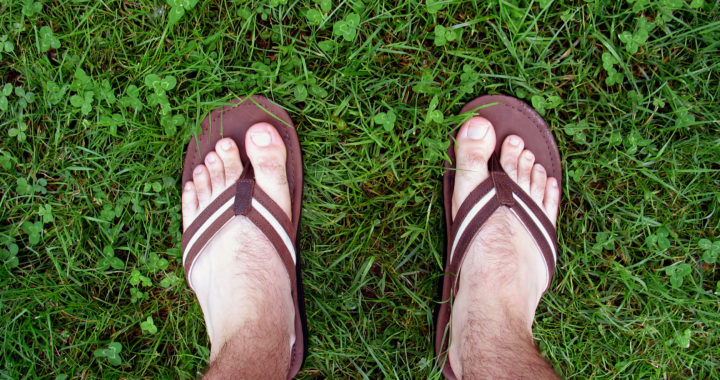Summer is here, which means flip flops, and bare feet. Here is a list of seven tips that are sure to keep your summer feet healthy all day and night.
- Blisters – Buying a new pair of sandals for the summer may seem harmless, but think of the aftermath. Many new shoes such as fitted sandals create painful blisters. Blisters form when a shoe rubs against your skin until it balloons out and fills with fluid to cushion your many layers of skin. The first step you can take in preventing blisters, is buying a comfortable fitted shoe that doesn’t need to be ‘broken in.’ These shoes are often made with soft fabrics or leathers. But if you are dying to buy that one specific shoe, line the inside of the shoe that rubs your foot with moleskin to prevent friction. Remember, blisters are usually inevitable with new shoes, and they can even happen in comfortable shoes that don’t need to be ‘broken in.’ If this is the case, clean the blister with hand soap and try not to pop it. If the pain is too much to handle, use a sterile needle to poke a tiny hole in the side of the blister and slowly let it drain. After it has drained, apply antibiotic ointment and cover with a band-aid. If you suffer from diabetes, do not break any blisters. This could cause infection and put your feet at further risk.
- Cracked Heels – Wearing open-backed shoes is a leading cause for cracked heels. The fat pad of your heel spreads, causing the dry skin to crack. Treat any deep cracks with antibiotic oils and cover with a band-aid. Cracked heels can also form just from the hot summer weather. If this is the case, use an exfoliating moisturizer every day on your summer feet and use a pumice stone once or twice a week in the shower. Dry and cracked heels can be a sign of further damage, such as fungus, psoriasis or diabetes. If you are concerned see a podiatrist or dermatologist.
- Flip Flops – Flip flops are the main staple of foot wear during the summer months. But did you know that not all flip flops are created equal? Over-wearing flip flops can cause stress fractures, heel pain, tendonitis and can even make hammertoes worse. If you plan on wearing these shoes from morning until night, make sure you pick them smartly. Look for a pair with a thicker sole, and has arch support. The more straps the flop has, the less stress placed on your toes. (With no support, your toes grip the front of the shoe so it doesn’t come off your foot.) If you can bend your flops in half, thats a good indicator that it doesn’t have enough support.
- Bare Feet – Its great to walk around with no shoes on during the summer. But did you know it can put you at a greater risk of getting viruses, fungus’ or bacteria? All of these things thrive in warm, moist environments. So think about your bare feet at the swimming pool. You can even pick up foreign bodies, such as glass and splinters. None of which are good for your feet.
- Sweaty Feet – With the warm weather, your feet may sweat more. All the excess moisture in your shoes, increases the risk of bacteria growth and building an infection. Wearing moisture wicking socks is a great way to combat the extra moisture. Change out of damp socks as soon as you can, this can also decrease smelly feet. If you don’t have the chance to shower right away, at least rinse your feet. You want a cool and clean environment for your feet. A natural trick to decrease sweat production in your feet is black tea. Brew some black tea, and let it cool. Soak your feet in it for 30 minutes. The tannins in the tea decrease sweat production.
- Pedicures – Getting pedicures are a staple for many during the summer months. But there can be serious health risks that are also sitting in the pedicure chair with you. Be wary of picking a nail salon, base your opinion on cleanliness and how thorough they clean the foot tubs. To stay completely safe, you may even want to bring your own tools.
- Germs – Its no secret that germs are bad. But did you know that (based on a study from the University of Miami) a single pair of flip flops can have up to 18,000 bacteria living on it- including Staphylococcus aureus? When you think about it, its no surprise that your shoes can have that much bacteria on them. Your shoes pass through all sorts of debris, including feces, bird droppings, and many other unappetizing things. A good rule of thumb is removing your shoes before you enter your home, so your not tracking in all this extra bacteria. Also wash your hands before touching anything after touching your feet.
Thank you to Everyday Health for the original information. You can read more here.

